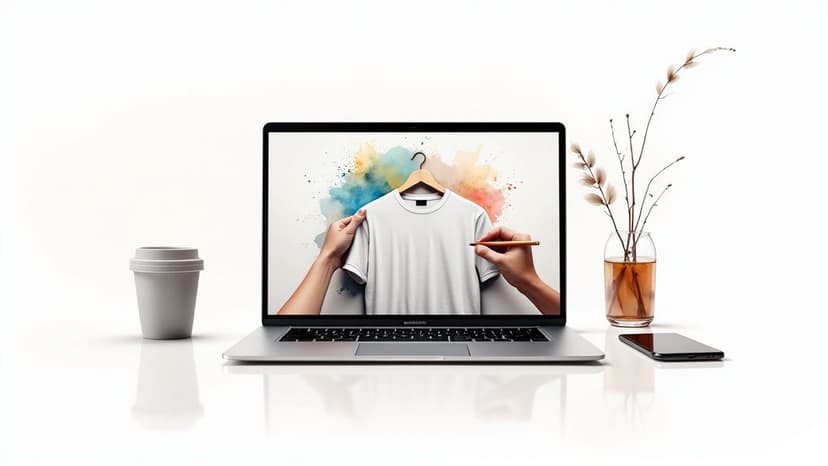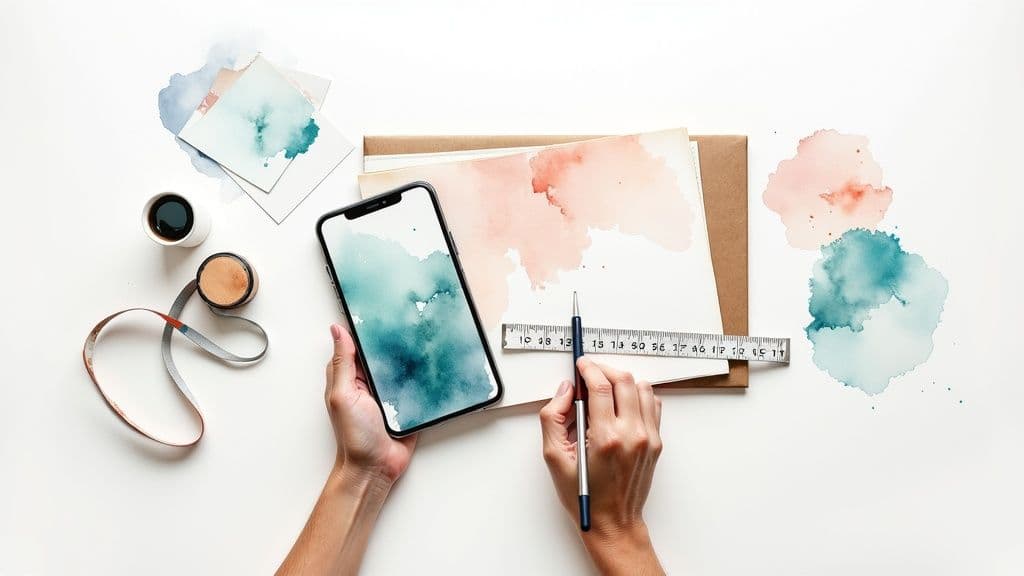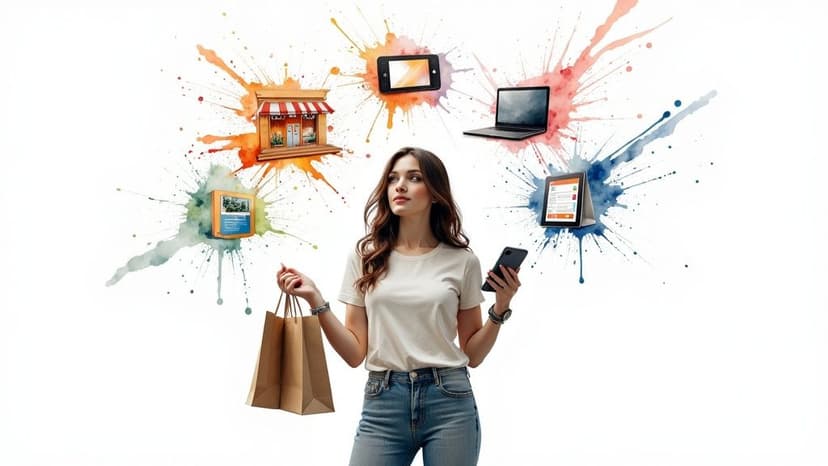
How to Create Mockups That Impress Your Clients
Learn how to create mockups that win projects. This guide covers planning, tool selection, and presentation tips for designers.
Your complete guide to social media image dimensions. Get the latest sizes and best practices for Instagram, Facebook, X, and LinkedIn to optimize your content.

Instastock Team
October 31, 2025 • 10 min read
Nailing your social media image sizes is one of those small details that makes a huge difference. Get it wrong, and your carefully crafted images can end up looking blurry, awkwardly cropped, or pixelated. This can instantly knock your brand's credibility and kill engagement before your audience even reads the caption.
Think of this guide as your go-to cheat sheet for the most important image sizes across the major social platforms. We’ll break down key ideas like aspect ratio and resolution, showing you why they're so vital for making your visuals pop. It's not just about looking good; a badly sized image can be compressed poorly by the platform's algorithm, making a bad situation even worse.

Getting these basics right guarantees your content looks sharp, whether it's viewed on a tiny phone screen or a massive desktop monitor. For instance, an image with a perfect 1:1 aspect ratio fits squarely into an Instagram feed post, whereas a 9:16 ratio is what you need for a full-screen, immersive Story. Paying attention to these specifics prevents the platform from auto-cropping your image and cutting off vital information.
To make things even easier, the summary table below gives you a quick, at-a-glance reference for the most common image types. You'll be able to find the exact dimensions you need in just a few seconds.
Here's a handy table to keep bookmarked. It covers the essential image dimensions for the big players, helping you get your profile, cover photos, and posts spot-on every time.
| Platform | Image Type | Recommended Dimensions (pixels) | Aspect Ratio |
|---|---|---|---|
| Profile Photo | 320 x 320 | 1:1 | |
| Feed Post (Square) | 1080 x 1080 | 1:1 | |
| Story/Reel | 1080 x 1920 | 9:16 | |
| Profile Picture | 180 x 180 (displays as 176 x 176) | 1:1 | |
| Cover Photo | 851 x 315 | 2.7:1 | |
| Feed Post | 1200 x 630 | 1.91:1 | |
| X (Twitter) | Profile Photo | 400 x 400 | 1:1 |
| Header Photo | 1500 x 500 | 3:1 | |
| In-Stream Post | 1600 x 900 | 16:9 | |
| Profile Photo | 400 x 400 | 1:1 | |
| Company Cover | 1128 x 191 | 5.9:1 | |
| Shared Image | 1200 x 627 | 1.91:1 |
Remember, these platforms are always tweaking things, so it's a good practice to double-check these specs every few months. But for now, this table should have you well-covered for creating professional-looking content.
Have you ever landed on a social media profile and just felt it looked… off? It's often the little things, and a major culprit is using the wrong social media image dimensions. Nailing these is the first, crucial step to building a brand that looks professional and trustworthy online.
When your images are sized correctly for each platform, you dodge a whole heap of common, brand-damaging pitfalls. We’re talking about awkward cropping that slices off your logo, blurry photos that scream "amateur," or stretched-out graphics that completely warp your message. These seemingly small mistakes can seriously undermine how people see your brand.
Consistency is everything when it comes to brand recognition. When your followers see sharp, perfectly formatted images every time you post, it sends a clear signal: you're professional and you care about the details. This kind of visual harmony builds trust and helps your brand stick in people's minds as they scroll through a busy feed. For a deeper dive into this, check out our guide on how to create brand guidelines: https://instastock.studio/blog/how-to-create-brand-guidelines.
It’s not just about looking good, either. Social media algorithms often give a little boost to content that fits their native specifications. That means properly sized images can lead to better visibility in the feed, helping you reach more people and drive more engagement. This principle applies everywhere online; for mobile apps, for example, mastering app store screenshot sizes for higher conversions can make a huge difference to download numbers.
Digital marketing experts here in the UK often point out that poorly sized images get compressed or distorted by the platforms, which tanks engagement. Things like likes, shares, and clicks all take a hit. In a competitive space where every impression counts, that's a problem you can't afford to have. You can find more stats and tips over on linkdigital.co.uk.
Instagram is all about the visuals, so getting your image sizes right isn't just a nice-to-have, it's essential. With more than 33 million users in the UK, every single post is a chance to make an impression. The right formatting means your content looks crisp and professional, not awkwardly cropped or pixelated. From that tiny profile picture to full-screen Reels, each format has its own specific recipe for success.
Social media platforms are always tweaking things, and that includes their recommended image dimensions. Instagram is a prime example, with different specs for its various content types. Your profile photo, for instance, needs to be 320 x 320 pixels. Feed posts offer more flexibility, with options for square (1080 x 1080 px), landscape (1080 x 566 px), and vertical (1080 x 1350 px). For the most immersive formats, Stories and Reels, you'll need to go all-in with 1080 x 1920 pixels.
The screenshot below gives you a feel for how these different formats come together on a typical Instagram profile.

You can see how the circular profile photo, the square grid posts, and the vertical Stories each have their own dedicated space. It’s a great reminder that a one-size-fits-all approach just won’t cut it if you’re aiming for a polished, professional look.
Let's break down the essential dimensions you'll be using most often to make sure your content always looks fantastic.
At the end of the day, it's all about stopping the scroll. Using the right dimensions—especially taller formats for your feed and Stories—really helps your visuals stand out and can make a real difference to your engagement.
Struggling to come up with new visual ideas? If you need a bit of a creative boost, have a look at our guide on social media content ideas to keep your feed looking fresh and interesting.
Let's be honest, getting your images right on Facebook can feel like a moving target. With so many different places for them to show up, a single, one-size-fits-all approach just doesn't cut it. To look polished and professional, you need to tailor your images for each specific spot, from your profile picture to your feed posts.
Your profile picture is your digital handshake. Aim to upload it at 180 x 180 pixels. Keep in mind that Facebook will crop this into a circle, so make sure the most important part of your logo or headshot is slap-bang in the centre. This little image is everywhere—comments, search results, you name it—so it's vital to get it right.

This consistent visual signature is key to building that instant recognition with your followers.
Think of your Cover Photo as your shop window. The perfect size for desktop is 851 x 315 pixels. But here's the catch: it looks different on mobile. The trick is to keep any vital text or logos within a central "safe zone" so nothing important gets chopped off, no matter where people are viewing it from.
When you're sharing images directly to the news feed, 1200 x 630 pixels is your go-to size. This gives you that classic 1.91:1 aspect ratio that works perfectly for both standalone photos and the thumbnails that appear with links.
For other popular formats, you'll want to adjust things a bit:
Want to make sure your images always look sharp and avoid any weird cropping or blurriness? It's worth diving into a detailed guide on Mastering Facebook Photo Sizes. Nailing these specs means your visuals will load fast and look fantastic on any device.
Let's talk about two very different, but equally important, platforms: X and LinkedIn. On X, you're competing for attention in a fast-moving timeline, so a punchy, crisp image is your best friend. Over on LinkedIn, it's all about professional polish, where your visual identity is a core part of your brand.
This section will walk you through getting your images just right for both.
Visuals are everything on X. I mean, with 97% of UK users regularly engaging with visual posts, you can't afford to get it wrong. To make sure your images look sharp and avoid any weird cropping, you need to stick to the recommended sizes. For a deeper dive, you can find more insights about social media image sizes on codesm.com.
X recommends a 400 x 400 pixel profile image and a much wider 1500 x 500 pixel header. For your posts in the feed, you've got two main options: square at 1200 x 1200 px or landscape at 1200 x 628 px.
Take a look at this typical X profile layout. It really shows how the header and profile picture have to work in harmony.
See how the round profile photo sits on top of the header? That's a crucial detail to remember when you're designing your brand's main page.
Getting your visuals right on X goes a bit deeper than just the numbers. Each type of image has its own job to do, and knowing the little details can make a big difference to your engagement.
Over on LinkedIn, your visuals speak volumes about your professional credibility. A poorly sized image can look sloppy and instantly weaken your authority. This platform isn't about quick scrolling; it's about carefully building a professional image that lasts.
For your personal profile, you'll want a clear, professional headshot at 400 x 400 pixels. The background banner behind it gives you a much bigger space to play with at 1584 x 396 pixels. It’s the perfect spot to show off your brand, your industry, or some of your professional wins.
When it comes to Company Pages, the dimensions are a little different to better suit a corporate brand. The company logo should be 400 x 400 pixels, but the cover image is a very specific panoramic size of 1128 x 191 pixels. Nailing these specific social media image dimensions is absolutely vital for a clean and authoritative look.

Getting the social media image dimensions spot on is a massive part of the battle, but there's a bit more to it if you want your visuals to really shine. Your first port of call should be choosing the right file format for the job.
Think of it this way: JPEGs are your go-to for most photographs. They do a brilliant job of keeping file sizes down without sacrificing too much quality. On the other hand, if you're working with logos, text-heavy graphics, or anything that needs a transparent background, PNG is definitely the format you want.
After picking your format, the next big thing is compression. Huge image files are a real drag, literally—they slow down page loading, which is a sure-fire way to frustrate your audience, especially if they're on a mobile. The trick is to shrink the file size enough to make it load quickly, but not so much that it looks blurry or pixelated. For a deep dive, check out our guide on how to https://instastock.studio/blog/how-to-reduce-file-size-of-photos.
The good news is you don't need a degree in graphic design to get this all done. There are plenty of fantastic, user-friendly tools out there built to make resizing, cropping, and compressing images a total breeze.
Here are a few of our favourites:
Using tools like these will help you build a smooth workflow, guaranteeing that every single image you post is perfectly prepped for its platform.
Let's be honest, trying to keep up with all the different image sizes for social media can feel like a full-time job. You're not alone if you've got questions. Getting these details right is what separates a sharp, professional-looking feed from one that looks a bit... off.
A question I hear all the time is, "Can't I just use the same image on all my profiles?" While that would certainly make life easier, it’s a shortcut that can backfire. Each platform is designed differently. An image that looks perfect as a square on Instagram will get awkwardly cropped into a wide banner on X (formerly Twitter), often cutting off the most important parts. Taking a few extra moments to resize for each placement is always worth it.
So, what's all this talk about "aspect ratio," and why does it matter so much? Simply put, it's the relationship between the width and height of your image. A perfect square is a 1:1 ratio, while a vertical Instagram Story is a 9:16 ratio.
Getting the aspect ratio right is often more important than the exact pixel dimensions. It’s what controls the overall shape of your image, ensuring platforms don't stretch, squish, or crop your visuals in weird ways.
Another thing people worry about is how often these recommended sizes change. The truth is, they do change. Social networks are constantly tweaking their layouts and adding new features, so image specs get updated. A good rule of thumb is to check in with a reliable guide like this one at least once a year to make sure your visuals are still looking their best.
Ready to create stunning, unique visuals that are always the perfect size? Instastock uses AI to help you generate any image you can imagine, fully owned and license-free. Create your first five images for free at https://instastock.studio.

Learn how to create mockups that win projects. This guide covers planning, tool selection, and presentation tips for designers.

What is omnichannel marketing? Learn how to build a seamless customer experience that drives loyalty and growth for your UK business with this practical guide.

Stuck for inspiration? Discover 12 fresh social media content ideas to boost engagement and grow your audience, with tips for creating stunning visuals.